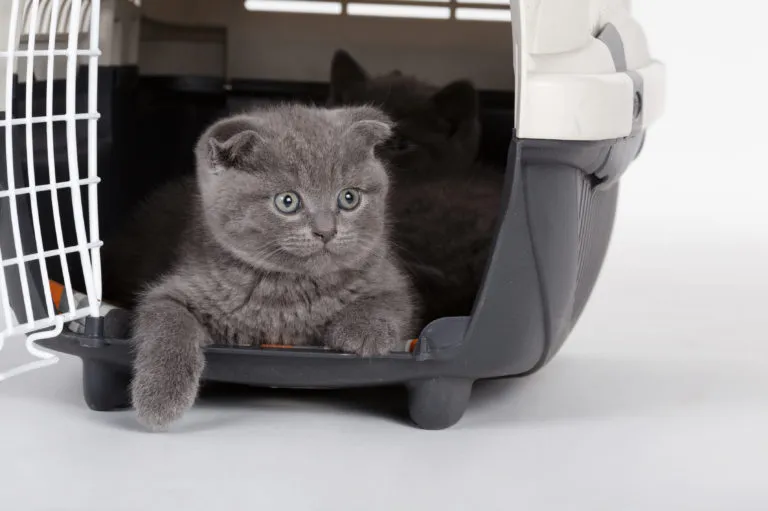Flying is even less popular with cats than car travel. Unfamiliar smells, loud noises and pressure compensation making flying unpleasant for even relaxed felines. However, unfortunately flying with cats can't always be avoided. Whether it be for moving house or a longer period abroad, you can make the flight as pleasant as possible for your cat with a little preparation.
The legal side
If you wish to take your cat with you on a flight, you should enquire about applicable regulations beforehand with the airline. Whilst some airlines don’t allow any animals whatsoever to enter the cabin and only carry them as cargo, others do accept them in the cabin. However, rules regarding the weight and height of the transport box differ. In most cases, a fabric transport case expressly permitted for flying is preferred. Animals must generally be registered when making the booking, as a fee often needs to be paid.
If you are travelling abroad, the entry requirements of the respective destination country should be considered. You can find this information on the respective embassy homepage. Depending on the entry requirements, your cat may need a health certificate or certain vaccinations. An EU pet passport is also a must. Please don’t forget to take all documentation with you when you travel!
Medication
Even if you wish to help your cat, it is advised not to give it sedation medication during air travel. Many airlines even expressly forbid this, because medication has a much more powerful effect in the air than at ground level, so it is difficult to predict its impact. For this reason, more and more airlines are refusing to accept sedated animals – both in cargo and cabin.
If you wish to calm down your cat, you can instead use pheromone sprays like Feliway or Bach flower drops. “Anxiety beads” available in pet stores are made up of a Bach flower mixture in the form of homoeopathic beads. Supplementary foods with the amino acid tryptophan should also stimulate the release of the “happiness hormone” serotonin and thereby make your cat more relaxed.
Safety inspection
At the safety inspection, animals travelling in the passenger cabin have to be taken out of the kennel. Ask for a separate room and point out that a runaway cat doesn’t help anyone and will significantly delay air traffic – stubbornness often pays off!
During the flight
Preparing for a flight is an exceptional situation – spending time on an aeroplane with the cabin pressure resulting from increasing altitude is anything but pleasant for your cat. Every cat reacts differently: some remain calm, whilst others complain vociferously. Some enter panic mode or hyperventilate. Regardless of what happens, cats must stay in the transport case for the entire flight. It should be sealed according to regulations and remain by your seat. The reason for the airline’s regulations is that nobody wants a cat on the loose in an aeroplane… Potential allergies or phobias from fellow passengers and hour-long searches should be avoided.
Regardless of the length of the flight, you may wish to soothe your cat occasionally or offer it some water… A little sip of water or a squeeze of cat paste encourage swallowing and can help pressure compensation. Not all cats wish to drink whilst travelling and despite their thirst, many refuse fluid intake. On very long flights, you can spray some fluid into the mouth of particularly trusting cats with a disposable syringe that doesn’t involve a needle. It’s possible to slightly open the transport case and reach in with your hand. Don’t be offended though if your cat recoils or even hisses. Flying is truly an exceptional situation!
Aeroplanes are often cool thanks to air conditioning. Placing a towel over the transport case can protect your cat from draughts. However, not all cats like travelling in the dark… Many transport cases like the Sturdibag have several windows that can be opened and closed as required with velcro fasteners.
Arrival
You’ve finally landed! In most cases, however, arrival at the airport doesn’t mean that the journey is over. Depending on whether you’ve flown abroad, you have to go through customs control. This is often not required for domestic animals, but in any case, you should have your cat’s health certificate and pet passport to hand. Without these, no entry and often no return are possible. You can find further information on the homepage of the respective embassy.
After the flight
Whether you’re at home, in a holiday residence or have moved into a new home, your cat will initially be a bit shaky. Give it lots of quiet time and let it come to! Feliway or Bach flowers can both help during the acclimatisation period.
We wish you and your cat a safe journey and all the best!
